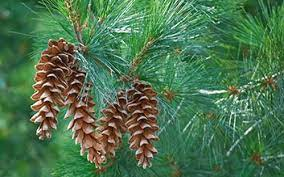Winter is an interesting time to observe the plants in our landscapes, especially those that are deciduous. When the leaves fall from our trees and shrubs throughout the Fall the structure of those plants begins to be slowly exposed over a few weeks time. Intricate patterns of branching expose themselves from perfectly symmetrical to gnarled and twisting.
Without the leaves and flowers to give us clues for I.D. we must look more closely at the size, form, structure and bark. Of course our evergreens remain pillars in the landscape and in some ways become easier to identify as they are not camouflaged by their deciduous brethren. Check out the list below of 5 deciduous and 5 evergreen trees to identify while walking on the trails at any of WLCT’s properties.
5 Deciduous Trees:
1) Red Oak- Deeply Ridged Bark runs up a large straight trunk leading to a Globe-Shaped Canopy. Look on the ground for leaves with pointed lobes and acorns.
2) Beech- Silvery smooth bark on large trunks with dense branching typically low to the ground. This Open-Headed shaped form is often found in colonies. The Beech also does not fully drop its leaves until new ones emerge in spring(This may be a defense mechanism to deter deer from eating young tender saplings). Look for spiny fruits on the ground.
3) Ash- With bark that is ridged and more of a lighter brown in color the Ash really shows its large Vase-Shaped form in winter. Large brown buds sit opposite of each other on branches. With this species under attack from the Emerald Ash borer you may see increased wood-pecker activity and light areas where they have removed the bark called “Bleaching”.
4) Black Cherry- Dark slightly ridged bark adorns this often Weepy-Shaped successional tree. Look for white lenticels running horizontally across the smaller branches and tons of black pea-shaped fruits on the ground.
5) Yellow Birch- Distinct papery bark that is yellowish white in color and often peeling off the tree helps the yellow birch stand out in winter. Somewhere between a Weepy and Open-Headed Shape this tree also has prominent lenticels and large catkins that dangle off the ends of branches.
5 Evergreen Trees
1) American Holly- The glossy and spiny leaves are a great I.D. feature as well as the abundant small red berries on the females. This tree strives to take on a Pyramidal Shape and can do so in the open but oftentimes they are crowded and misshapen in the forest. Smooth gray bark covers trunks covered in bulbous wound wood from lower branches dying off from lack of sunlight.
2) Eastern Red Cedar- A successional tree that is often found in old farm fields taking on a grand Pyramidal Shape. Densely packed scale-like leaves provide dense cover for wildlife while the dusty blue berries provide plenty of food for birds. Look for the reddish colored bark that peels vertically down the trunk.
3) Atlantic White Cedar- With similar features to that of the Red Cedar, this Pyramidal Shaped evergreen with dense foliage will only be found in wetlands. It tends to be a bit more columnar than its cousin and its fruits have small spines on them which mature to small rosette like cones.
4) White Pine- Our country was built upon this tree in the colonial times being used for ships, homes and fencing alike. The large scaly bark wraps around a large straight trunk that can easily grow upwards of 100’ in the right conditions. The long dusty blue needles grow five to a cluster and large cones are produced by the tree. Often misshapen due to their size and exposure to wind but will grow more pyramidal in the open.
5) Pitch Pine- This coastal staple is the roughneck cousin of the White Pine. Often small and gnarly in shape due to their direct exposure to the coastline and lack of nutrients in the sandy soils it inhabits. With needles in three to a cluster and the cones considerably smaller and more stout than the White Pine it makes it easy to distinguish between the two.





